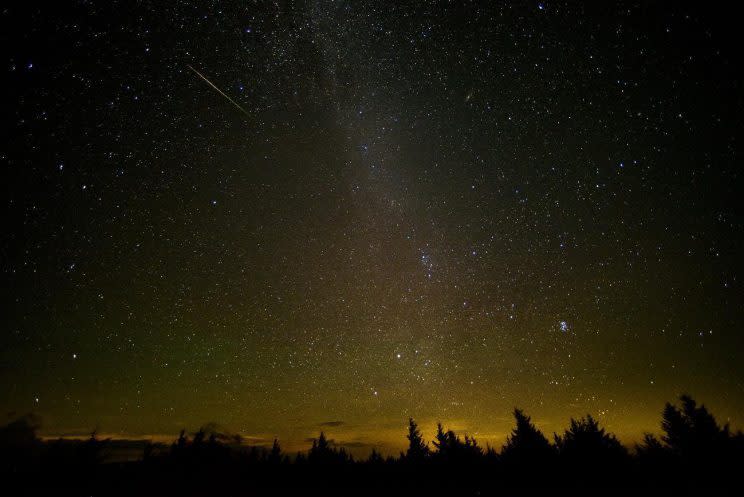Perseid meteor shower dazzles stargazers
Shooting stars are lighting up the night sky for the annual Perseid meteor shower when Earth passes through the debris left behind by an ancient comet.
The Perseids, which appear every year in August, get their name from their point of origin within the constellation of Perseus, the mythological Greek hero who beheaded Medusa.
Forecasters at NASA predicted that this outburst would reach double the normal rates of meteors for Aug. 11 and 12. The last Perseid outburst, in which more meteors than usual appear, occurred in 2009.
Slideshow: Spectacular Perseid meteor shower lights up the night skies >>>
Each meteor is actually a small piece of the comet Swift-Tuttle that crumbles in a flash of light when it collides with Earth’s atmosphere, according to NASA. Swift-Tuttle orbits around the sun every 133 years.

“Here’s something to think about. The meteors you’ll see this year are from comet flybys that occurred hundreds if not thousands of years ago,” Bill Cooke with NASA’s Meteoroid Environments Office in Huntsville, Ala., said in a press release. “And they’ve traveled billions of miles before their kamikaze run into Earth’s atmosphere.”
Cooke said the shower could reach up to 200 meteors per hour.
According to NASA, the best time to watch the Perseids is between midnight and dawn on the morning of Aug. 12, and it could take about 45 minutes for one’s eyes to get accustomed to the dark. For those in areas with light pollution or cloudy skies, Ustream will broadcast the meteor shower starting at 10 p.m. ET on Aug. 12.
Plenty of professional and amateur astronomers and stargazers have already shared videos showing their view of the Perseids.
What are the Perseid meteors and how can you see them tonight? That and more on our @Tumblr: https://t.co/UpBL9Ch252 pic.twitter.com/kzfz0CwPoW
— NASA (@NASA) August 12, 2016
Lots of activity on the roof with multiple cameras running to catch #PerseidMeteorShower. Photos to come. #wawx pic.twitter.com/X3gooNf6E2
— NWS Seattle (@NWSSeattle) August 12, 2016
A photo posted by Valia Efstathiou (@valiae) on Aug 12, 2016 at 4:16am PDT
Stunning time-lapse photography of the #PerseidMeteorShower pic.twitter.com/0DPpA5jpBS
— Travis Martin (@june4schoobs) August 12, 2016
A photo posted by James Croak (@jamescroak) on Aug 12, 2016 at 4:21am PDT


